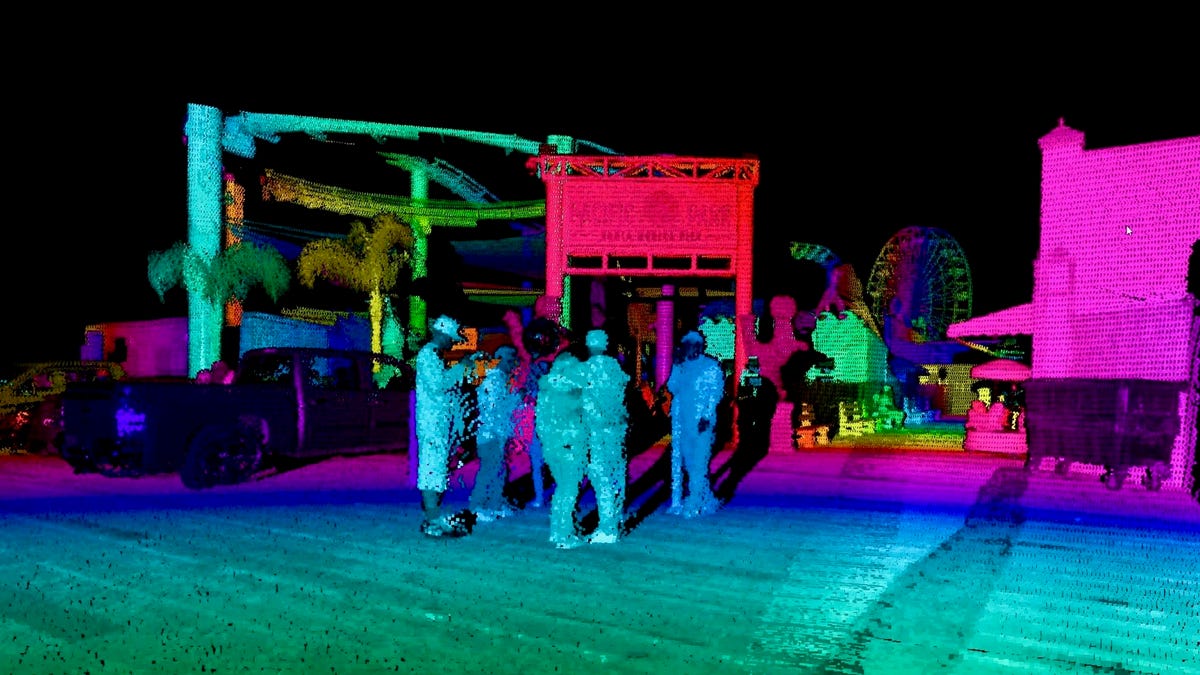Luminar lidar can tell what you're thinking
Volvo is using a new lidar and AI to guess your next move by scanning your arms and legs.

Volvo thinks lidar can do more than just detect pedestrians -- it can figure out what they're going to do next.
It starts with innovation in the lidar unit itself: Partner Luminar uses an unusually long wavelength of laser light, 1,550 nanometers versus the typical 905 nm, allowing it to blast the laser beam farther while keeping it harmless to retinas. That means range of up to 250 meters, more than double the reach of most other lidar, which are power-limited because their 905 nm beam can cause eye damage.
The Luminar unit is also compact since it doesn't spin like those from market leader Velodyne but, instead, contains a single laser that is constantly reaimed very rapidly. Luminar describes its view as like looking through a straw, but changing that look a million times per second so it creates a wide angle of view, virtually. That approach yields a unit that can be more easily embedded in a car's body, rather than having to sit proud to accommodate a spinning head.
Luminar's latest lidar unit uses a higher slice of the light spectrum (1,550 nm) so that it can boost its output and range without risking damage to eyes that may catch its laser emissions.
As this lidar assembles a "point cloud" of the objects it detects, that data is sent to a new AI algorithm from Volvo. It not only recognizes and classifies objects but, if they're pedestrians, makes an educated guess about what direction they're moving next, based on limb position and movement. That can make a big difference in the quality of decisions a self-driving car makes.
The system is still in development, but among the key measures of success will be its price: The auto industry needs lidar units to come down to a few hundred dollars each, not the current several thousands of dollars apiece. It also wants them to disappear, becoming small enough to hide in the bodywork of a car and not stick up, ruining what designers spent thousands of hours expressing. The Luminar module will need to hit those marks or any other gains it makes may be muted in the market.
Originally published Dec. 13.
Update, Dec. 15: Clarified that the AI algorithm involved is made by Volvo.

